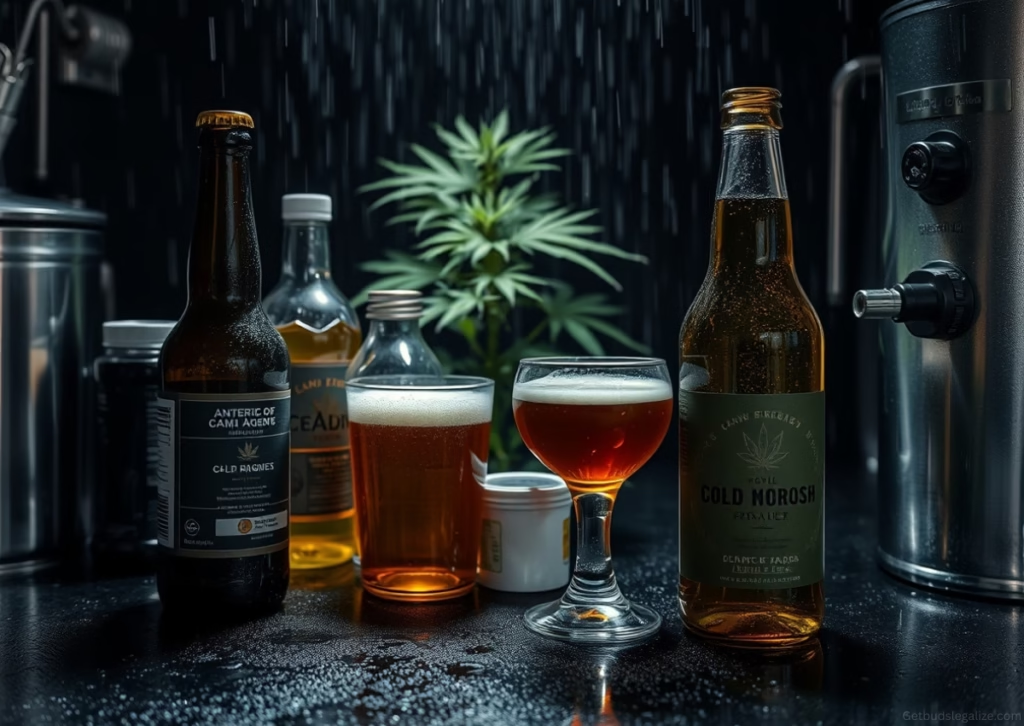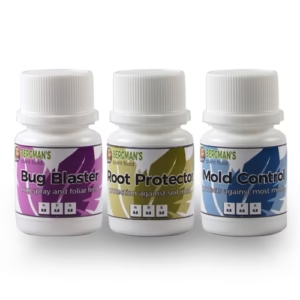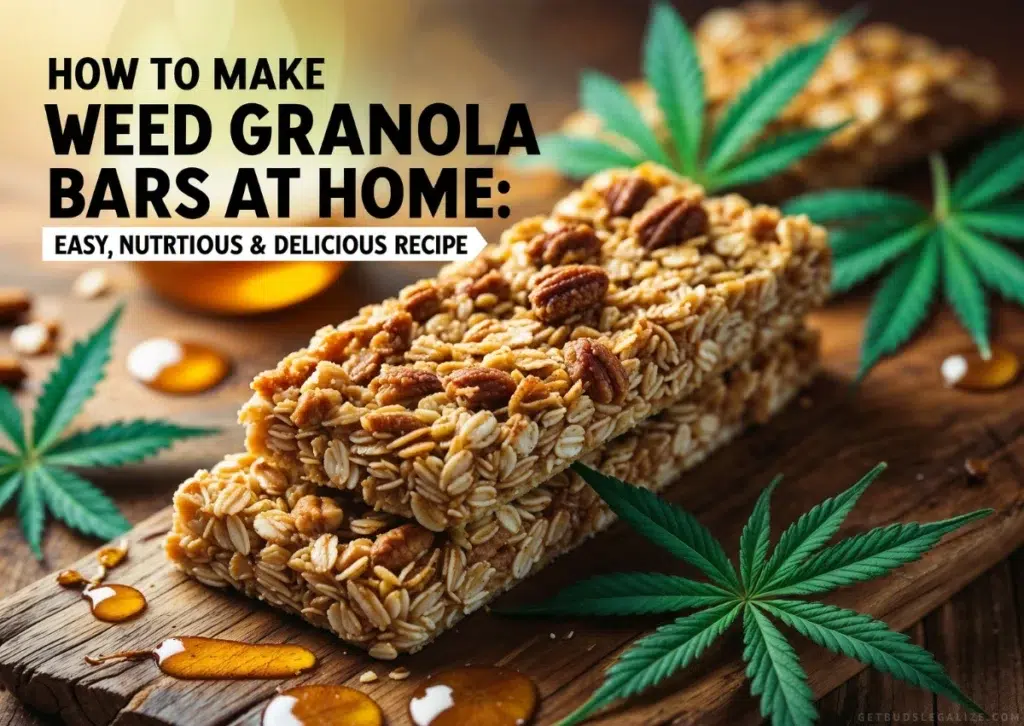How to Make Weed Infused Beer at Home: A Step-by-Step Guide for Homebrewers
Have you ever wondered how to combine the refreshing taste of beer with the relaxing effects of cannabis? Cannabis-infused beer is quickly becoming a popular trend in craft brewing, allowing enthusiasts to enjoy both the benefits of beer and cannabis in one drink.
Whether you’re an experienced homebrewer or a cannabis aficionado, this guide will show you how to create your very own weed beer at home!
Can You Make Cannabis-Infused Beer at Home?
Cannabis and beer have shared a long history, both being enjoyed across various cultures. While cannabis has been used for thousands of years (think bhang in India), cannabis-infused beer only emerged as a brewing trend after cannabis legalization in the early 2000s.
Although weed-infused beers are now available in certain regions like Canada and select U.S. states, homebrewers can still craft their own cannabis-infused beers at home.
Ready to brew your perfect cannabis beer? Let’s dive into the steps!
How to Decarboxylate Cannabis for Homemade Weed Beer
Before you start brewing, you’ll need to prepare your cannabis. Raw cannabis contains THCA, which isn’t psychoactive. To activate the THC, you must decarboxylate it through heat. Here’s how to do it:
Step-by-Step Decarboxylation Process:
- Grind Your Weed: Grind 20g of cannabis into a coarse powder to increase surface area.
- Preheat the Oven: Set your oven to 235°F (120°C).
- Prepare the Tray: Line a baking tray with parchment paper and spread the ground cannabis evenly.
- Bake the Cannabis: Place the tray in the oven for 40–60 minutes, shaking halfway through to ensure even decarboxylation.
- Cool It Down: Let the cannabis cool completely before using it in your beer brew.
Now that your cannabis is prepped, it’s time to brew your cannabis beer!
How to Make Cannabis Infused Beer: Easy Recipe for Beginners

Ingredients:
- 20g decarbed cannabis
- 85g hops pellets (e.g., Citra hops)
- 4 liters of light malt extract syrup
- 400g malting barley
- Slow-fermenting yeast pack
Essential Brewing Equipment:
- French press
- 30L pot
- 10L fermentation bucket
- Siphon tube
- 2 large muslin bags
- Large ziplock bag
- Rolling pin
- Strainer
- Large bowl
- Sanitizer fluid
- Glass beer bottles
- Capper and caps
- Thermometer
Step-by-Step Process for Brewing Cannabis Beer
- Crack the Grains: Start by cracking the malted barley grains with a rolling pin. The goal is to break the outer shell without crushing the inner kernels, which helps release fermentable sugars without making the wort too cloudy.
- Boil the Grains: Add the cracked malted barley to 2 liters of water in your brewing pot. Heat the water to 66–68°C (150–155°F) and maintain the temperature for 30 minutes. This mashing process extracts the sugars from the grains.
- Strain the Grains: After boiling the grains, strain the mixture into a large bowl and discard the solids. You’ll be left with the wort, the liquid base for your beer.
- Add Malt Syrup: Stir in the light malt extract syrup and add water to bring the total volume up to 6 liters. This adds sweetness and body to the beer.
- Add the Hops: Place the hop pellets inside a muslin bag and immerse it into the boiling wort. Allow it to simmer for 1 hour to infuse the beer with the hops’ characteristic bitterness, flavor, and aroma. After the boil, carefully remove the hop bag and set it aside to cool.
- Cool the Wort: After removing the hops, let the wort cool down completely. To accelerate the cooling process, place the brewing pot into an ice bath, ensuring the temperature drops quickly and safely.
- Sanitize Your Equipment: Before proceeding, sanitize all your brewing equipment, especially the fermentation bucket, siphon tube, and any utensils. This step prevents contamination.
- Transfer to Fermentation Bucket: Once cooled, transfer the wort to the sanitized fermentation bucket, leaving room at the top to accommodate foaming during fermentation.
- Add Yeast: Sprinkle the slow-fermenting yeast pack into the cooled wort and stir gently. The yeast will ferment the sugars into alcohol.
- Add Cannabis: After 24 hours of fermentation, place your decarbed cannabis in a muslin bag and add it to the fermentation bucket. This will infuse your beer with cannabis flavor and effects.
- Fermentation: Let the beer ferment for approximately 10 days. Check the temperature regularly to keep it within the yeast’s optimal range.
- Bottle Your Beer: After fermentation, use the siphon tube to transfer the beer to sanitized bottles, leaving sediment behind. Cap the bottles tightly and store in a cool, dark place for carbonation.
Once bottled, allow your weed-infused beer to carbonate for 1–2 weeks before enjoying it. Start with a small amount to gauge the effects, especially if you’re new to cannabis-infused beverages.

Troubleshooting Common Issues When Brewing Weed Beer
Here are some common brewing issues and how to troubleshoot them:
- Clarity Issues: Use fining agents or cold-crash your beer before bottling to improve clarity.
- Uneven Carbonation: Make sure sugar is evenly dissolved in the beer before bottling.
- Sediment: Pour slowly from the bottles to leave sediment behind in the bottom.
Best Cannabis Strains and Beer Styles for Infusion
Choosing the right beer style and cannabis strain is essential for a delicious and balanced cannabis beer. Here are some great pairings:
- Lager: Pairs well with fruity strains like Mango Kush or Blue Dream.
- Stout: Combines beautifully with earthy strains like OG Kush, creating a rich, coffee-like flavor.
- Pilsner: A crisp pilsner works well with citrusy strains like Lemon Haze.
- IPA: Bold IPAs complement strains like Jack Herer or Jack The Ripper.
- Sour Beers: Pairs perfectly with tropical strains like Pineapple Express or Tangie.
Pro Tip: Let the cannabis strain’s flavor guide your beer selection. Lighter beers go well with subtle strains, while rich beers pair better with stronger strains.

Food Pairings to Enhance Your Cannabis Beer Experience
Cannabis beer pairs wonderfully with certain foods, enhancing your overall experience:
- Cheese Platters: Aged cheddar, gouda, or creamy brie complement the flavors of your beer.
- Barbecued Meats: Smoky ribs or grilled chicken match well with earthy strains.
- Chocolate Desserts: Pair a stout-based cannabis beer with chocolate brownies or truffles for a luxurious treat.
- Fruity Salads: Light pilsners infused with cannabis go perfectly with fresh citrus salads.
Why You Should Try Making Weed-Infused Beer at Home
Cannabis beer brings a unique blend of relaxation and refreshment. Here’s why you should try it:
- Enhanced High: The combination of alcohol and THC creates a powerful synergy. Alcohol intensifies THC’s effects, leading to a quicker onset and stronger high.
- Double the Enjoyment: Cannabis beer offers the best of both worlds: the buzz from alcohol and the calming effects of THC.
- Relaxation at Its Finest: Both THC and alcohol are known for their calming properties, making cannabis beer perfect for unwinding after a long day.
Final Thoughts: Tips for Brewing Cannabis Beer
Brewing your own cannabis-infused beer is fun and rewarding. Follow the steps carefully, and once you’ve mastered the basics, experiment with different strains, beer styles, and flavors to craft your perfect cannabis beer.
Loved this guide? Share it with your fellow cannabis enthusiasts! Don’t forget to sign up for our newsletter for more cannabis recipes and brewing insights.
Frequently Asked Questions (FAQs) About Homebrew Weed Beer
CBD oil doesn’t mix well with beer’s water-based liquid due to its oil content. For a better infusion, it’s recommended to use CBD-rich cannabis strains instead, as they blend more effectively into the beer.
To make a CBD-infused beer, use a CBD-rich cannabis strain and follow the same brewing process as with regular cannabis beer. Alternatively, you can add CBD isolate or tinctures during the bottling stage for an added boost.
Yes! CBD strains can be used to create non-psychoactive cannabis beers with relaxing effects. These beers offer a calming experience without the “high” associated with THC.
Typically, cannabis beer ferments for about 10 days, but the process can vary depending on factors like yeast strain and environmental conditions. Always ensure the fermentation is complete before bottling to avoid issues with carbonation and clarity.
When stored in a cool, dark place, homemade cannabis beer can last up to 6 months. For the best taste and potency, it’s recommended to consume it within the first few months of brewing.
While you can reuse cannabis in brewing, the potency of the second infusion will be lower. The flavor will still come through, but the effects may not be as strong.
Yes, you can make weed beer without alcohol! Non-alcoholic weed beer is made by brewing cannabis-infused beverages without fermentation or by removing alcohol after brewing. Here are two common methods:
- Infusion with Non-Alcoholic Beer: Start with a pre-made non-alcoholic beer and infuse it with cannabis oils or tinctures. This is the easiest and most straightforward method.
- Homebrew Method: Brew your own non-alcoholic beer by halting the fermentation process early, then infuse it with decarboxylated cannabis.
Yes! Cannabis beers made with THC-rich strains can produce a high, although the onset may be slower compared to smoking. The alcohol content in the beer can enhance the effects of THC, providing a more intense experience.
Hops add bitterness, aroma, and flavor to beer, but you can make cannabis-infused beer without them. To replace the bitterness, consider using alternative ingredients such as spices, fruit, or herbs to create a unique flavor profile.
The legality of cannabis beer varies depending on your location. Always check local laws and regulations before brewing or consuming cannabis beer to ensure you comply with your area’s rules.
The best cannabis strains for brewing depend on the type of beer you want to create. For lighter beers, fruity or citrusy strains like Lemon Haze or Mango Kush work well. For darker beers, try earthy strains like OG Kush or Granddaddy Purple to complement the robust malt flavors.
Yes, you can make cannabis beer with CBD strains for a non-psychoactive experience. These strains provide calming effects but do not produce the “high” typically associated with THC. Be sure to decarboxylate CBD cannabis in the same way as THC for proper activation.
Yes, cannabis extracts like THC or CBD oils, tinctures, or concentrates can be added to your beer during brewing. However, be aware that these oil-based extracts may require extra care to properly mix with the beer. Consider using emulsifiers to ensure even distribution.
The alcohol content of cannabis beer will depend on your brewing process, just like any other beer. THC or CBD won’t significantly affect the alcohol content. However, combining alcohol with cannabis can amplify the effects of THC, so it’s important to be mindful of your tolerance.
Yes, cannabis-infused honey or sugar can be used to add a unique flavor and enhance the effects of cannabis in your beer. Be cautious about the amount used, as it can impact fermentation and beer sweetness. Adding too much might alter the beer’s balance.
If your cannabis beer doesn’t taste as you hoped, consider adjusting the strain or hops used. It may take some trial and error to find the perfect balance of cannabis and beer flavors. You can also experiment with adding more hops, malts, or even fruits or spices to fine-tune the flavor.
ILGM Fertilizer

Ultimate Marijuana Fertilizer
Nourish your plants from seedling to harvest with our premium formula!
- Enough for 5+ Plants: Perfect for your growing needs.
- Exclusive Discount Package: Save more while you grow!
- Versatile Use: Ideal for soil, hydroponics, and all growing mediums.
- Optimal Plant Health: The best way to ensure robust growth and thriving yields.
ILGM Plant Protector

Ultimate Plant Protection for Your Cannabis
Safeguard your plants from diseases and harmful pests with our effective formula!
- Comprehensive Protection: Keep your cannabis healthy and thriving.
- Three 20 ml Bottles: Sufficient supply for up to 20 plants.
- Versatile Application: Perfect for soil, hydroponics, and all growing mediums.
- Peace of Mind: Ensure a healthy garden with our trusted protector.





















